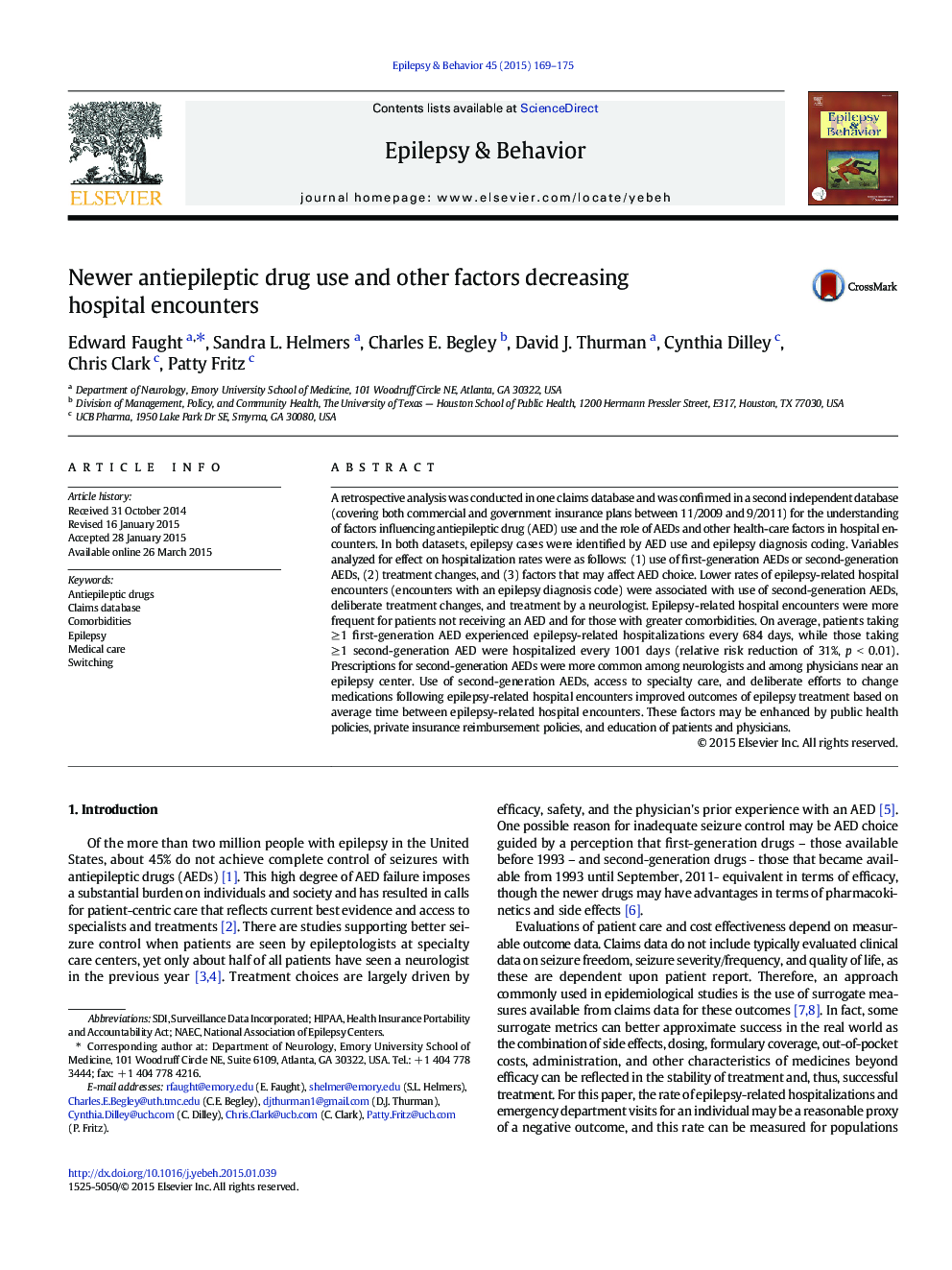| Article ID | Journal | Published Year | Pages | File Type |
|---|---|---|---|---|
| 6011274 | Epilepsy & Behavior | 2015 | 7 Pages |
â¢Second-generation antiepileptic drugs reduce frequency of epilepsy-related hospital encounters.â¢The observation is not affected by patient age or sex or by geographic region.â¢Antiepileptic drug choice has greater impact on patients with more comorbidities.â¢Neurologists are more likely to prescribe a second-generation antiepileptic drug.â¢Changing medication after a hospitalization delays the next hospital encounter.
A retrospective analysis was conducted in one claims database and was confirmed in a second independent database (covering both commercial and government insurance plans between 11/2009 and 9/2011) for the understanding of factors influencing antiepileptic drug (AED) use and the role of AEDs and other health-care factors in hospital encounters. In both datasets, epilepsy cases were identified by AED use and epilepsy diagnosis coding. Variables analyzed for effect on hospitalization rates were as follows: (1) use of first-generation AEDs or second-generation AEDs, (2) treatment changes, and (3) factors that may affect AED choice. Lower rates of epilepsy-related hospital encounters (encounters with an epilepsy diagnosis code) were associated with use of second-generation AEDs, deliberate treatment changes, and treatment by a neurologist. Epilepsy-related hospital encounters were more frequent for patients not receiving an AED and for those with greater comorbidities. On average, patients taking â¥Â 1 first-generation AED experienced epilepsy-related hospitalizations every 684 days, while those taking â¥Â 1 second-generation AED were hospitalized every 1001 days (relative risk reduction of 31%, p < 0.01). Prescriptions for second-generation AEDs were more common among neurologists and among physicians near an epilepsy center. Use of second-generation AEDs, access to specialty care, and deliberate efforts to change medications following epilepsy-related hospital encounters improved outcomes of epilepsy treatment based on average time between epilepsy-related hospital encounters. These factors may be enhanced by public health policies, private insurance reimbursement policies, and education of patients and physicians.
